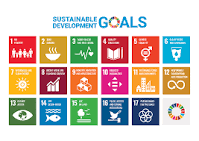FILM AS A MEDIUM FOR SOCIAL CHANGE
Film is more than just
entertainment—it is something that can make humans change how they perceive
their world. Right from the initial days of cinema, films represented society
but went on to reshape it. Film has the capability to move the heart, probe
assumptions, communicate stories, and ultimately bring good change. Being a
combination of visual imagery, sound, narrative, and performance, film
generates an experiential environment that speaks deeply to people. Its power
is that it makes the abstract concrete and human stories universal.
The fact that film is a
visual medium means that it can go beyond linguistic, cultural, and
geographical boundaries. A single striking image or a scene can convey
sophisticated social realities without explanation. In doing so, films can be
heard by individuals on varying levels of education and literacy, and so they
are most useful in environments where other methods of communication may break
down. In depicting the lives of victims of discrimination, violence, or
injustice, films provide a face and a voice to those that tend to remain unseen
in popular debate. This emotional attachment may lead to empathy, and it is
empathy which is necessary in order to create social consciousness and involvement.
The movies have helped in
arousing awareness on matters of a political, economic, and cultural nature.
Earlier, movies were the source of defiance, especially under times of
oppression and when authoritarian regimes dominated society. On these
occasions, movies used allegoric narrative and symbolism to criticize
governments and go against dominant ideologies. For example, allegorical films
in extremely censored countries have functioned as coded language whereby film
directors were capable of critiquing the imperfections and abuses of society.
These films, apart from informing and enlightening audiences, have also played
an important role in creating a feeling of solidarity within oppressed groups.
Documentary cinema, in
particular, has been among the most immediate and effective forms of social
commentary. Compared to films, documentaries rely on real footage, interviews,
and true storytelling that gives them credibility that can profoundly impact.
They reveal underlying facts—poverty, gender abuse, deforestation, or
atrocities of war—and introduce these subjects into the public sphere. The
mainstream media traditionally overlooks stories presented in documentaries,
and through presenting them to the forefront, the filmmakers pressure society to
own up to ugly truths.
One of the most critical
contributions film makes towards promoting social change is by shaping public
debate. Film tends to act as touchstones in national and global debates
regarding social matters. A single thought-provoking film has the capacity to
spark controversy in the press, trigger scholarly research, shape cultural
opinion, and even induce legal reforms. For instance, films on racial
discrimination, caste discrimination, or on LGBTQ+ rights can influence how
people think and talk about these phenomena, bringing them into the mainstream
of public debate. Cinema thus becomes not just a cultural product but a social
force.
Representation in film also
plays a significant role in the change process. For decades, films have been
dominated by stories centered on dominant, often privileged, groups—leaving
minorities misrepresented, stereotyped, or even completely invisible. This
underrepresentation contributed to biases in society and exclusion. But with
increasing numbers of filmmakers from disadvantaged communities being heard,
movies have begun to paint a more diverse palette of identities and
experiences. When people see themselves being represented honestly and with
respect on the screen, it revalidates their experience and contributes to a
sense of visibility and belonging. Conversely, when audiences see lives
different from their own, it can dismantle prejudice and enable cross-cultural
understanding.
Films may also mobilize
action. Moving narratives have the potential to cause audiences to move beyond
passive consumption and be proactively committed to change processes. This may
involve joining advocacy campaigns, supporting grassroots movements, or
changing individual behavior. In the majority of cases, films are succeeded by
organized efforts—such as educational efforts, community discussions, and
partnerships with NGOs—that translate awareness into action. Film festivals,
social screenings, and internet platforms have increasingly been employed as
spaces for engagement where cinema serves as the starting point for further
community action.
Although its application as
a vehicle for social change is viable, the use of film is not challenge-free.
There are censorship, funding, and distribution problems that can nullify the effect
of socially conscious films. Filmmakers typically experience pressures from
political factions, corporate business, or conservative organizations to dilute
or avoid issue-based themes. Moreover, with the advent of digital media, where
content is being produced and viewed at fast speeds, it is difficult for a
single film to sustain long-term interest or impact without planned follow-up.
Even audiences themselves get desensitized if difficult content is not handled
sensitively, and they end up with apathy rather than action.
Yet the democratization of
film and the advent of digital media have made new possibilities for employing
film to make change available. Independent filmmakers now possess low-cost
equipment and social media to use to release their films widely. Viewers are no
longer confined to the walls of traditional cinemas; they have access to a wide
range of films on internet platforms, making it easier for critical stories to
find their way into homes, schools, and communities. Virtual screenings of
films, interactive narratives, and participatory video initiatives are
shattering the norm on how film can be harnessed to engage individuals in
social transformation.
In essence, film is a fluid
and dynamic art that can exercise immense power to move minds and hearts. It
can raise awareness of injustice, offer hope, speak for the voiceless, and pave
the way for dialogue, reflection, and transformation. At its best, film is not
so much a map of the world—it is a catalyst for imagining what the world can
be. While societies struggle with the intricate social dilemmas, movie will
continue to be an effective medium for all who want to comprehend, unite, and
remake the human condition.

Comments
Post a Comment